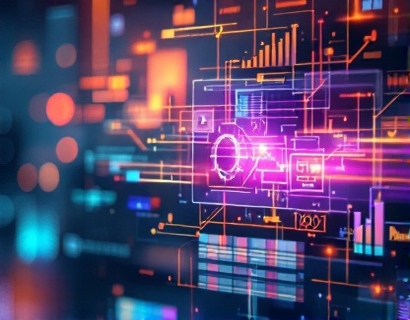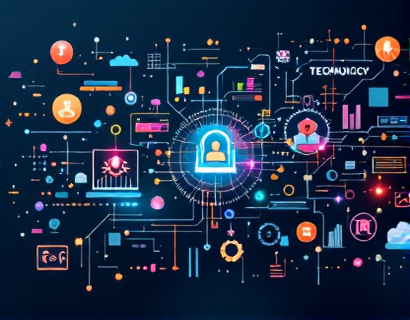Revolutionizing Digital Asset Verification: The Decentralized dApp for Ucosystem Premium Access
The digital asset landscape has evolved significantly with the advent of decentralized applications (dApps), offering innovative solutions to longstanding challenges. One such challenge is the verification of digital asset holdings, a critical step for accessing premium features and ensuring secure management of assets. This article delves into how a cutting-edge decentralized application is transforming the way users interact with digital assets, particularly within the Ucosystem, by providing a secure, efficient, and streamlined verification process.
The Ucosystem, a comprehensive platform for digital asset management, has seen a surge in user adoption. However, the verification of digital asset holdings remains a cumbersome and often centralized process, exposing users to potential risks and inefficiencies. To address these issues, a decentralized solution has emerged, leveraging blockchain technology to verify digital asset holdings and grant premium access to the Ucosystem. This approach not only enhances security but also empowers users with greater control over their assets.
Understanding the Need for Decentralized Verification
Traditional verification methods for digital assets often rely on centralized authorities, which can be vulnerable to hacks, data breaches, and censorship. These centralized systems also introduce single points of failure, where the entire verification process can be disrupted. In contrast, a decentralized dApp operates on a distributed network, eliminating these vulnerabilities and ensuring a more robust and reliable verification process.
The decentralized nature of this dApp means that no single entity has control over the verification data. Instead, the verification process is distributed across multiple nodes in the network, making it nearly impossible to manipulate or alter. This transparency and decentralization build trust among users, who can verify their asset holdings with confidence, knowing that the process is immutable and tamper-proof.
How the Decentralized dApp Works
The dApp operates by utilizing smart contracts, self-executing contracts with the terms directly written into code. These smart contracts are deployed on a blockchain network, ensuring that the verification process is automated, transparent, and secure. Here’s a step-by-step breakdown of how the verification process works:
- Asset Registration: Users begin by registering their digital assets on the dApp. This involves providing unique identifiers for each asset, such as public keys or hashes, which are then recorded on the blockchain.
- Verification Request: When a user wants to verify their asset holdings, they initiate a verification request through the dApp. This request is broadcast to the network of nodes.
- Smart Contract Execution: The smart contract automatically checks the provided identifiers against the blockchain records to confirm the ownership and existence of the assets. This process is instantaneous and requires no human intervention.
- Verification Result: Once the verification is complete, the smart contract updates the user’s profile on the dApp with the verification status. If the assets are verified, the user is granted access to premium features and benefits within the Ucosystem.
This streamlined process not only speeds up verification but also reduces the risk of errors and fraud. Users can verify their assets in real-time, ensuring that their access to premium features is always up-to-date and secure.
Benefits of Using the Decentralized dApp
The adoption of this decentralized verification dApp brings numerous benefits to digital asset holders and Ucosystem users. Some of the key advantages include:
Enhanced Security
By eliminating centralized points of control, the dApp significantly reduces the risk of security breaches. The distributed nature of the network ensures that even if some nodes are compromised, the overall system remains secure. This robust security framework provides users with peace of mind, knowing their asset data is protected.
Increased Efficiency
The automated and instant verification process saves users time and effort. Traditional methods often involve multiple steps and intermediaries, leading to delays and potential bottlenecks. With the dApp, verification is quick and seamless, allowing users to access premium features without unnecessary delays.
Greater Control and Transparency
Users have full control over their asset data, as it is stored on the blockchain and accessible only to them. The transparency of the blockchain ensures that all verification transactions are visible and verifiable, reducing the risk of disputes and fraud.
Exclusive Features and Benefits
Once verified, users gain access to a range of exclusive features and benefits within the Ucosystem. These may include:
- Priority Support: Enhanced customer support with faster response times and dedicated assistance.
- Special Discounts: Exclusive discounts on transactions, services, and products within the Ucosystem.
- Community Engagement: Access to member-only events, forums, and community initiatives, fostering a sense of belonging and collaboration.
- Data Insights: Advanced analytics and insights into market trends and asset performance, helping users make informed decisions.
These benefits not only enhance the user experience but also encourage greater engagement and loyalty to the Ucosystem platform.
Streamlining Digital Asset Management
The integration of the decentralized verification dApp into the Ucosystem ecosystem streamlines the overall digital asset management process. Here’s how it contributes to a more efficient and user-friendly experience:
Simplified Onboarding
The onboarding process for new users is simplified, as the verification step is integrated and automated. Users can quickly set up their accounts and start using the platform without the need for manual verification by third parties.
Continuous Verification
The decentralized dApp continuously monitors and updates verification statuses, ensuring that users always have the most current and accurate information. This real-time verification eliminates the need for periodic manual checks, reducing the administrative burden on both the platform and the users.
Interoperability and Integration
The dApp is designed to be interoperable with other blockchain-based platforms and services, allowing users to seamlessly manage their assets across different ecosystems. This interoperability enhances the versatility of the Ucosystem, making it a central hub for digital asset management.
User-Friendly Interface
The dApp features an intuitive and user-friendly interface, making it accessible to users of all technical backgrounds. Whether a seasoned crypto enthusiast or a beginner, users can easily navigate the verification process and access the platform’s features.
Overall, the decentralized verification dApp not only simplifies the verification process but also enhances the overall user experience, making the Ucosystem a more attractive and reliable platform for digital asset management.
Conclusion
The introduction of a decentralized verification dApp represents a significant leap forward in the management and verification of digital assets within the Ucosystem. By leveraging blockchain technology, this solution offers enhanced security, increased efficiency, and greater control for users. As the digital asset landscape continues to evolve, such innovations will play a crucial role in shaping the future of decentralized finance and asset management.
By embracing this decentralized approach, the Ucosystem not only addresses current challenges but also sets a new standard for digital asset verification and access. Users can look forward to a more secure, efficient, and rewarding experience, solidifying the Ucosystem’s position as a leader in the digital asset space.










































